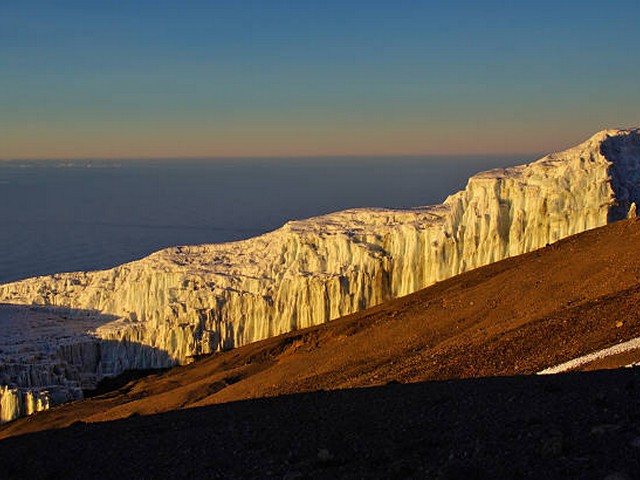Kilimanjaro Photography Inspiration for Travellers
Capturing the Majesty of Africa’s Tallest Peak
Welcome to an unforgettable journey where every view is a masterpiece and every snapshot tells a story. Mount Kilimanjaro isn’t just a mountain; it’s an icon of Africa’s sprawling beauty, a beacon for adventurers, and a paradise for photographers. Whether you’re a seasoned shutterbug or someone who loves to capture moments on a smartphone, Kilimanjaro offers a canvas like no other. At the Kilimanjaro Centre For Trekking and Ecotourism (KCTE), we understand the allure of this majestic peak, and we’re here to guide you through not only reaching its summit but capturing the journey in the most awe-inspiring way possible.
Why Kilimanjaro Appeals to Every Photographer
The Diverse Landscapes
From the lush rainforests at its base to the alpine desert and the icy summit, Kilimanjaro presents a series of dramatically shifting landscapes. Each zone offers unique photographic opportunities, from exotic wildlife in the forested regions to surreal rock formations and the gleaming glaciers at the peak. The variety ensures that your photo collection will tell a rich and varied story.
The Golden Hours
Photography enthusiasts know about the magic of the golden hours—those times right after sunrise and just before sunset. Kilimanjaro’s high altitude and equatorial location offer some of the most stunning golden hours you can experience, with soft, diffused light and long shadows creating perfect, picture-postcard photographs.
The Cultural Tapestry
The journey up Kilimanjaro is not just about nature. It’s also a cultural immersion. The Chagga people who live on the mountain’s slopes provide a cultural angle to your photographic journey, enriching your album with portraits and cultural insights.
Planning Your Photographic Expedition
Know the Best Times to Visit
While Kilimanjaro is accessible year-round, the best times for photography are during the dry seasons—January to mid-March and June to October. These periods offer clearer skies and less precipitation, allowing for unobstructed views of the mountain and better hiking conditions.
What Gear to Bring
Packing the right gear is crucial. A good DSLR or mirrorless camera with a reliable zoom lens can capture distant details like wildlife or the summit’s glaciers. A wide-angle lens will do justice to the expansive landscapes. Don’t forget plenty of batteries and memory cards, as cold and altitude can affect battery life.
Hiring the Right Guide
At KCTE, our guides are not only trekking experts but also understand the needs of photographers. They know the most picturesque routes and the perfect times to capture them, enhancing your photographic experience.
Iconic Shots and How to Capture Them
The Forest Mystique
In the montane forest, the dense foliage and mist create a mystical atmosphere perfect for moody, ethereal shots. Use a wide aperture to capture detailed foregrounds against softly blurred backgrounds, which highlight the mysterious beauty of this zone.
The Rocky Mid-Slopes
As you ascend, the landscape opens up with vast rocky fields and sparse vegetation. These areas are ideal for playing with textures and contrasts in your photography. Early morning light provides dramatic shadows that define shapes and forms beautifully.
The Glacial Summit
The summit of Kilimanjaro, with its glaciers and snow, feels otherworldly. Here, use the stark white of the snow against the deep blue of the early morning sky for high-contrast images that convey the harsh, pristine environment.
Engaging with the Community
Capture the human element by focusing on the porters, guides, and local communities. Their vibrant stories and colorful attire add a powerful narrative layer to your Kilimanjaro adventure. Always ask permission before taking photographs to respect their privacy and culture.
Preserving the Environment
Photography on Kilimanjaro is not just about taking home memories but also about respecting and preserving this incredible ecosystem. Practice ethical photography by maintaining a safe distance from wildlife and staying on designated paths to avoid damaging the flora.
Kilimanjaro Through Your Lens
Imagine showcasing your journey through stunning, high-quality images that tell a story of adventure, challenge, and beauty. This is what awaits you on a Kilimanjaro trek. Each photograph you take will not only reflect your personal experience but also inspire others to explore this magnificent peak.
Why Book Your Trek with KCTE?
At Kilimanjaro Centre For Trekking and Ecotourism, we are dedicated to providing a tailored and unforgettable photographic journey. Our expert guides, comprehensive knowledge of the area, and commitment to sustainable tourism ensure that your trek is successful and your photography outstanding.
Ready to Capture the Beauty of Kilimanjaro?
There’s no better time to plan your photographic expedition to Mount Kilimanjaro. Contact Kilimanjaro Centre For Trekking and Ecotourism today, and start preparing for an adventure that will fill your portfolio with incredible images and your heart with unforgettable memories.
FAQ
What is the best season for photography on Kilimanjaro?
The best seasons for photography on Kilimanjaro are during the dry months, from January to mid-March and from June to October, offering clearer skies and optimal lighting.
Do I need professional photography gear to capture good photos on Kilimanjaro?
While professional gear is recommended for the best quality images, modern smartphones and basic DSLRs can also capture stunning photos with the right techniques.
Can beginners in photography still enjoy a photo tour of Kilimanjaro?
Absolutely! Kilimanjaro offers photographic rewards for all skill levels, and our guides at KCTE can help you find the best spots and techniques to capture incredible images.
Is a special permit required for photography on Kilimanjaro?
No special permit is required for personal photography, but commercial shoots and the use of drones may require permissions and should be arranged in advance.
Capture the spirit of Africa, the challenge of Kilimanjaro, and the joy of a journey you’ll never forget. Book your trek with Kilimanjaro Centre For Trekking and Ecotourism, where every step is a new scene waiting to be captured.




